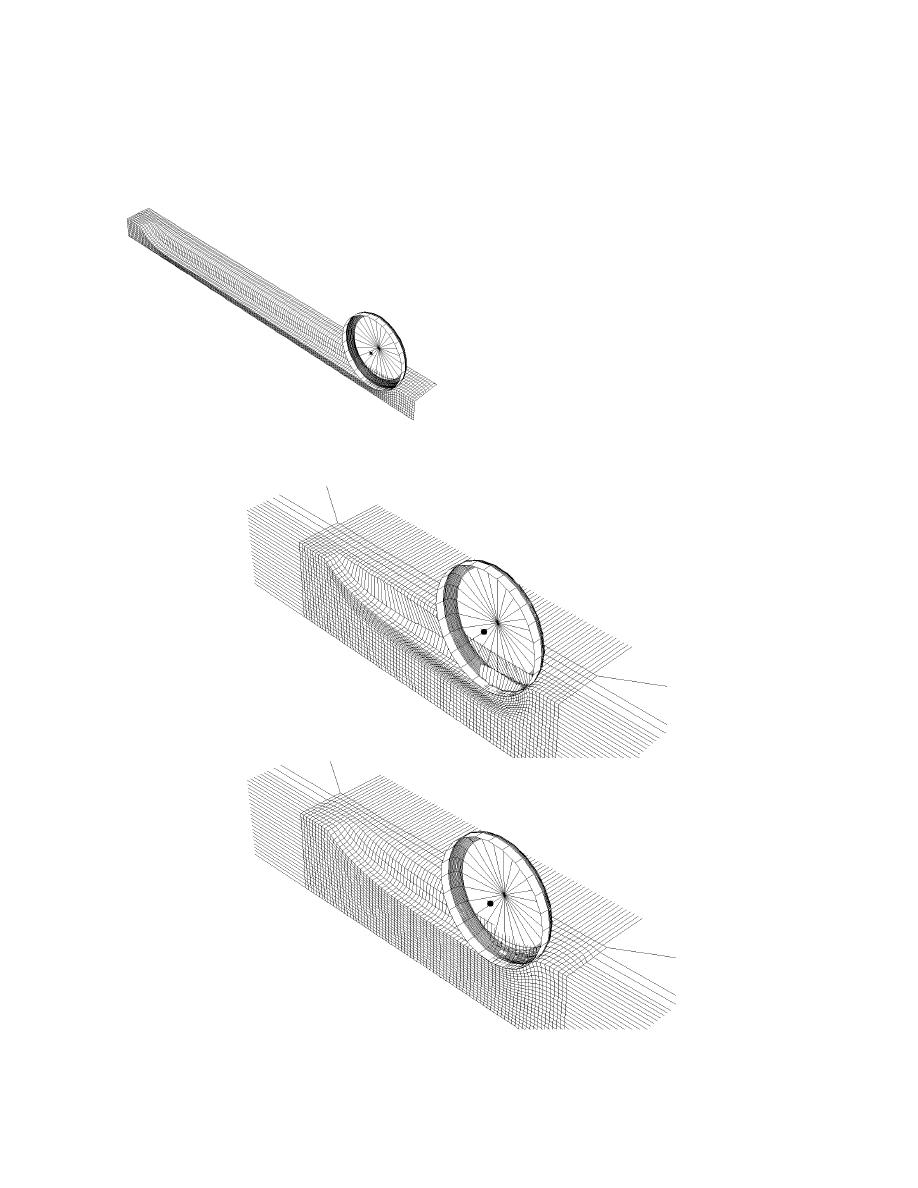
These models were configured for both implicit
mesh, therefore, does not directly reflect the deforma-
dynamic analysis and explicit dynamic analysis. The
tion of each element, as in a standard finite element
explicit models used ALE meshing, where the mesh
mesh, because the nodes and elements have moved
automatically adjusts during the deformation by al-
relative to the snow mass. However, the final surface
lowing mass transfer between elements. The final
shape is correctly represented, and tracer nodes can
be used to track the mass movement. The ALE mesh-
ing significantly reduces model run time (from over
48 hours to approximately 24 hours on an SGI Ori-
gin), eliminates severe mesh distortion, and smooths
the resultant load response, but it does not affect the
numerical results. Figure 57 shows the deformed
mesh for the deep snow model with and without the
ALE meshing.
The snow material properties were adjusted to
match field measurements of sinkage and motion
resistance. This was done primarily through changes
to the cap hardening and consequent adjustments
to the DruckerPrager parameters. Since snow com-
Figure 56. Model of a wheel rolling on 20 cm of
paction is the primary mechanism contributing to
fresh snow (infinite elements not shown).
motion resistance, the pressurevolume relationship for
Figure 57. Comparison of standard mesh (top) and ALE mesh (bot-
tom). (From Shoop et al. 1999.)
43



 Previous Page
Previous Page
